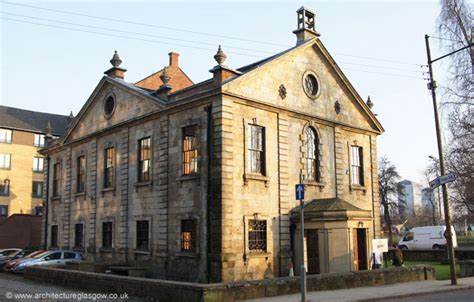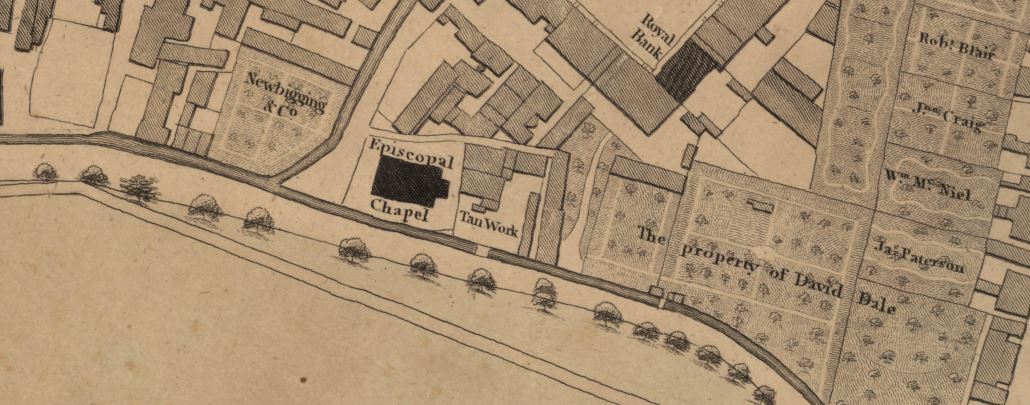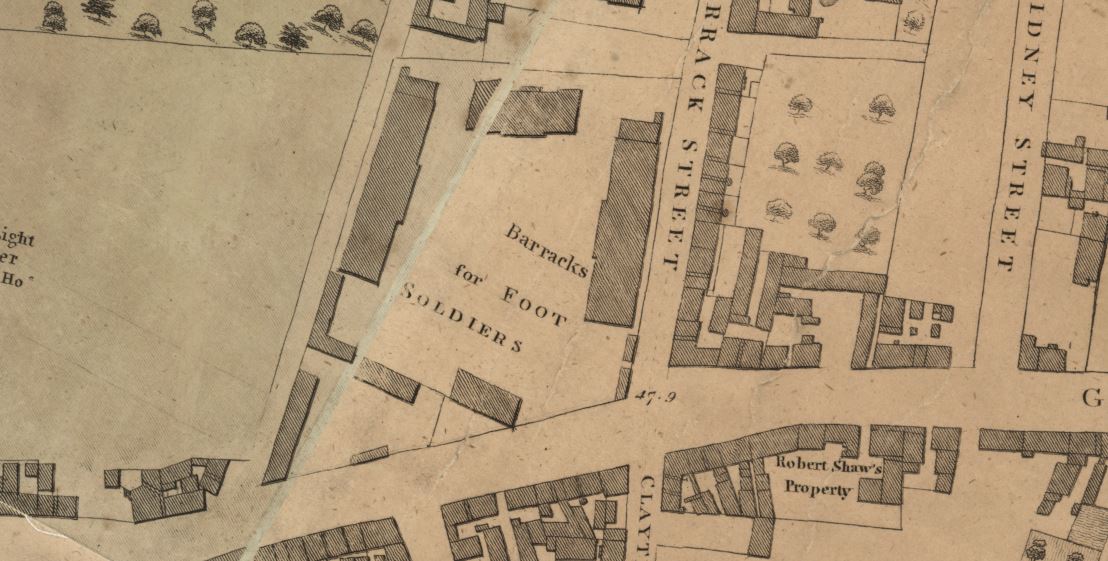The '' Piskies ''
Saint Andrews by the Green(Glasgow) was built in 1750 and is the oldest Episcopalian church erected in Scotland since the reformation.
Saint Andrews by the Green(Glasgow) was built in 1750 and is the oldest Episcopalian church erected in Scotland since the reformation.
To build the church, a piece of land of approx 1,090 sq yards was purchased for the sum of £90 5s. This plot was situated at the junction of the Molendinar and Camlachie burns from whencetheir waters mingled and flowed into the nearby river Clyde.
This tiny portion of land was known as Willow's Acre and was formally part of the Eaglesham Croft. In this rural spotwhich was then the outskirts of the City, the church was rapidly built in the space of just one year.
The Episcopalians were mainly Jacobites and their sympathies and loyalties lay strongly in favour of Bonnie Prince Charlie. They were also unpopular with the majority of Glaswegians who still held to the Covenanting traditions of the City. The church was built four years after
the battle of Culloden and bitterness was still smouldering towards the Episcopalians or '' Piskies '' as they were known.
Andrew Hunter, a mason, took the contract to build the church . He was a member of the Shuttle street Secession Church which was demolished in 1845 and he
Andrew Hunter, a mason, took the contract to build the church . He was a member of the Shuttle street Secession Church which was demolished in 1845 and he
was called before the session and questioned about his temerity in planning to build this church. He was unrepentant however and he was formally excommunicated.
-more to follow-
Another martyr,on the unpopular side of the fence, was Alexander Stalker,a book seller in the City and the editor of the Glasgow Journal. Because of his efforts in trying to raise the funds for the building of the church, his sales fell rapidly and caused him financial distress.
Feelings ran high, in those days, against the 'Piskies' especially at the rapid erection of their church, in one year, against the slow progress of seventeen years, taken to build the neighbouring St Andrews Parish church in the square.
The Piskies were highly suspect and one observer was reputed to have witnessed the Devil actively engaged in helping to build the Episcopalian Church. '' Auld Nick himsel wis exertin' ees limitless strength an' heavin' free-stone blocks intae position
as if they wur feathers! ''

 Read on Twitter
Read on Twitter




